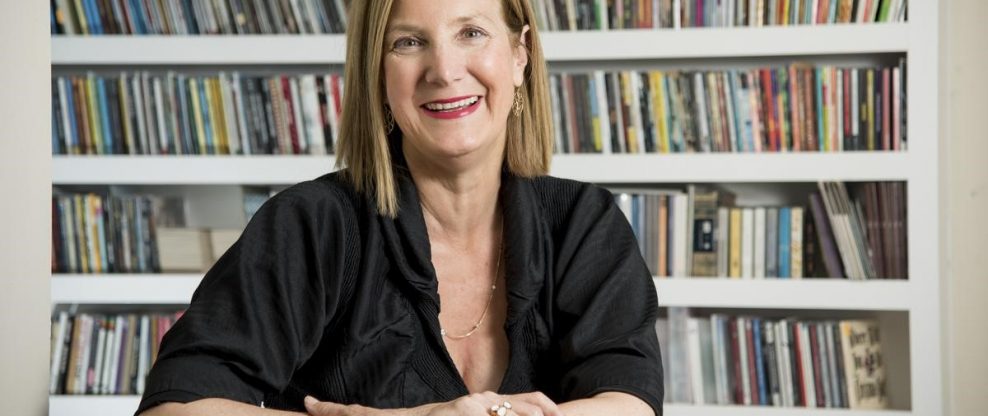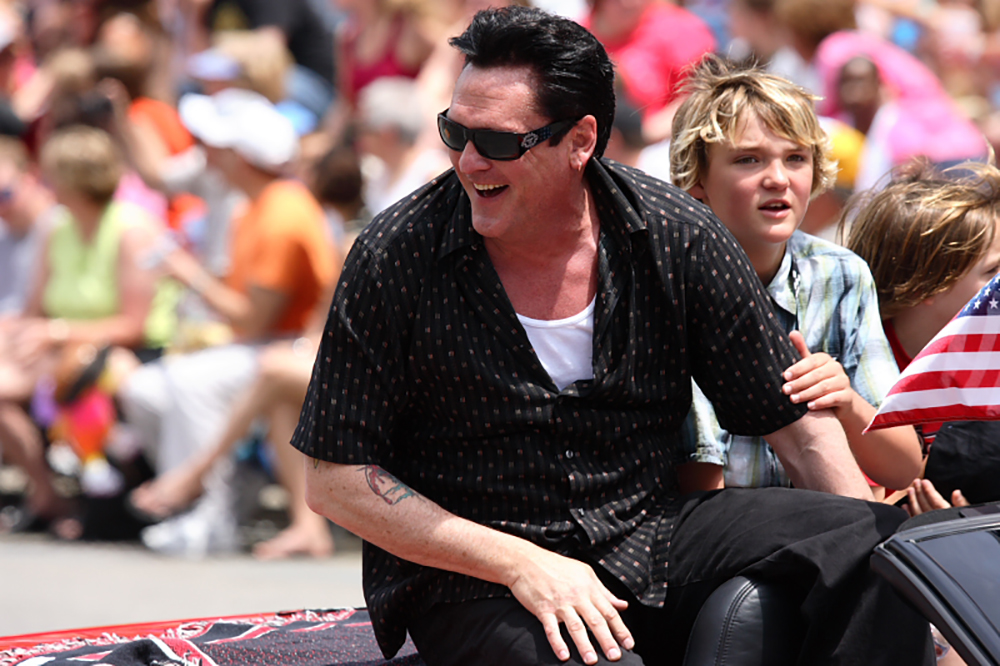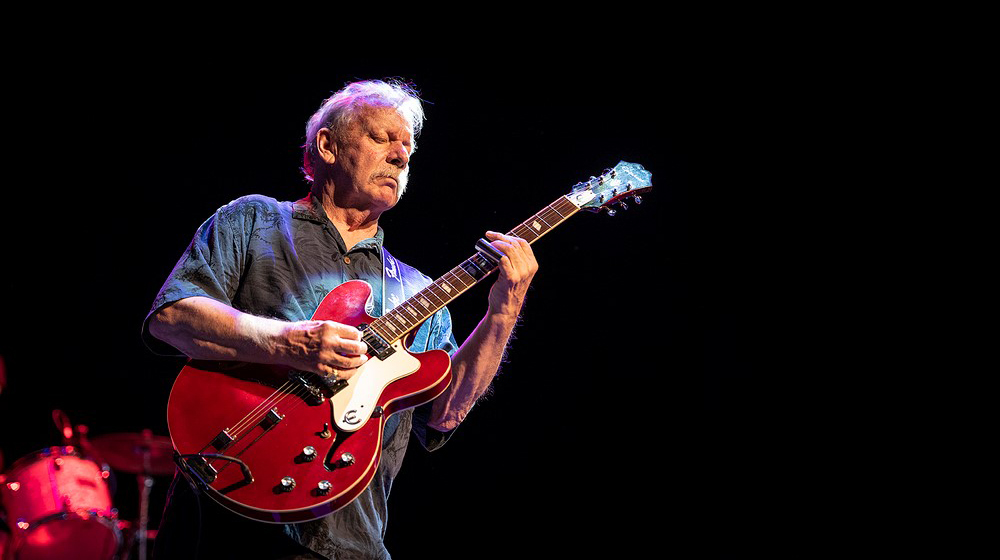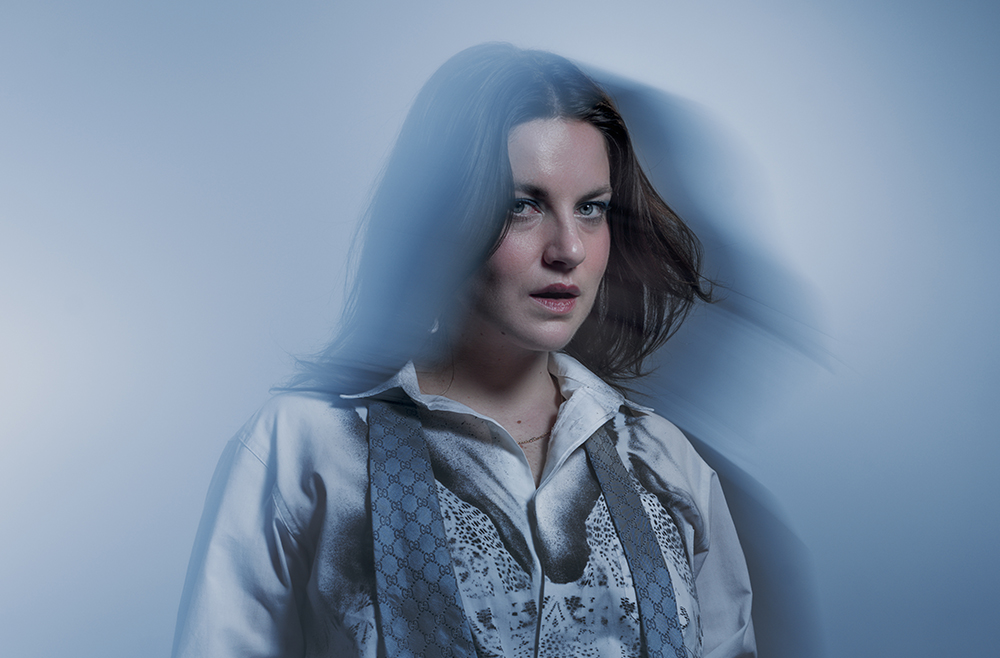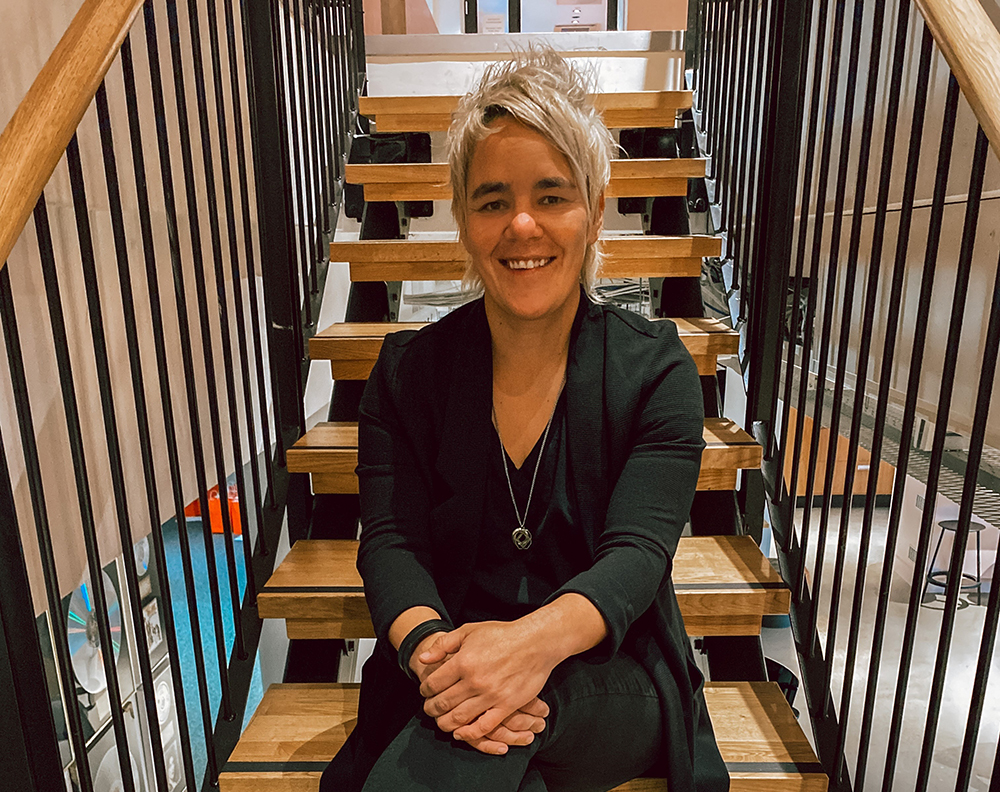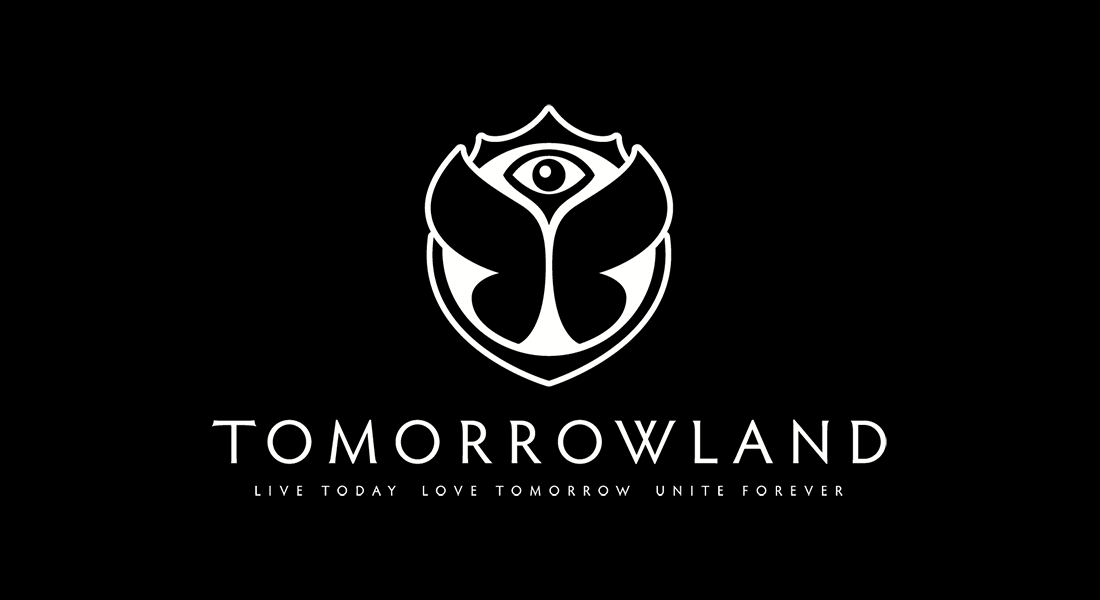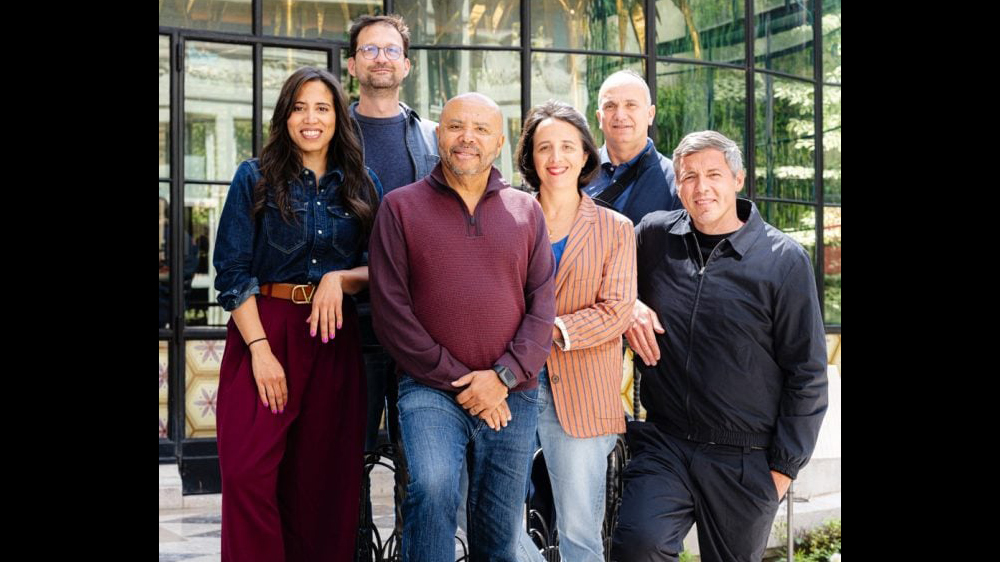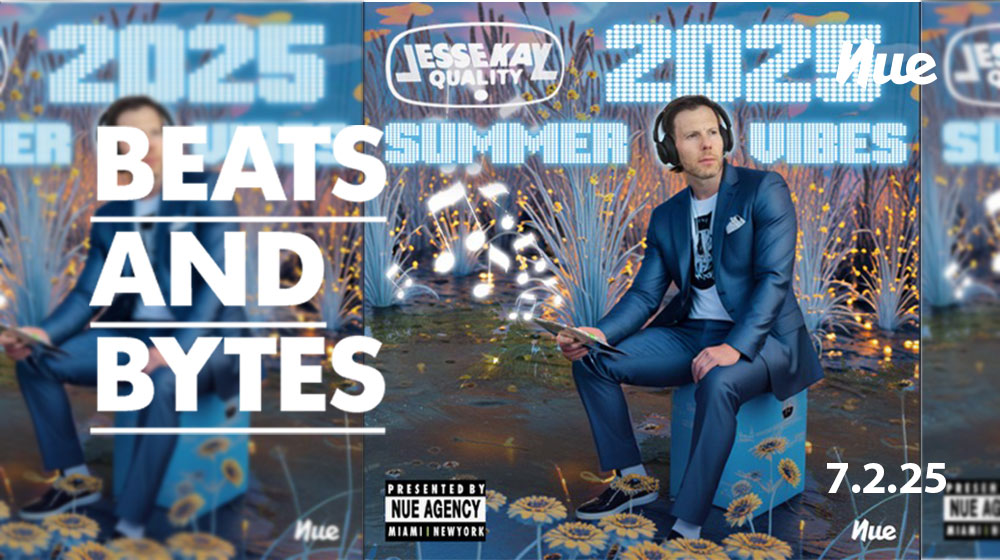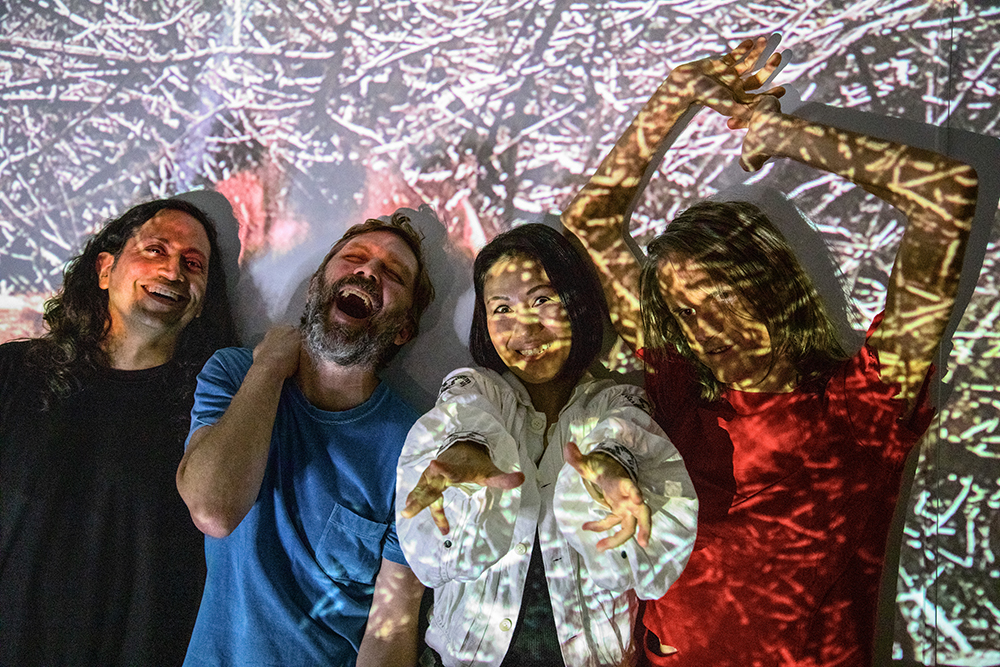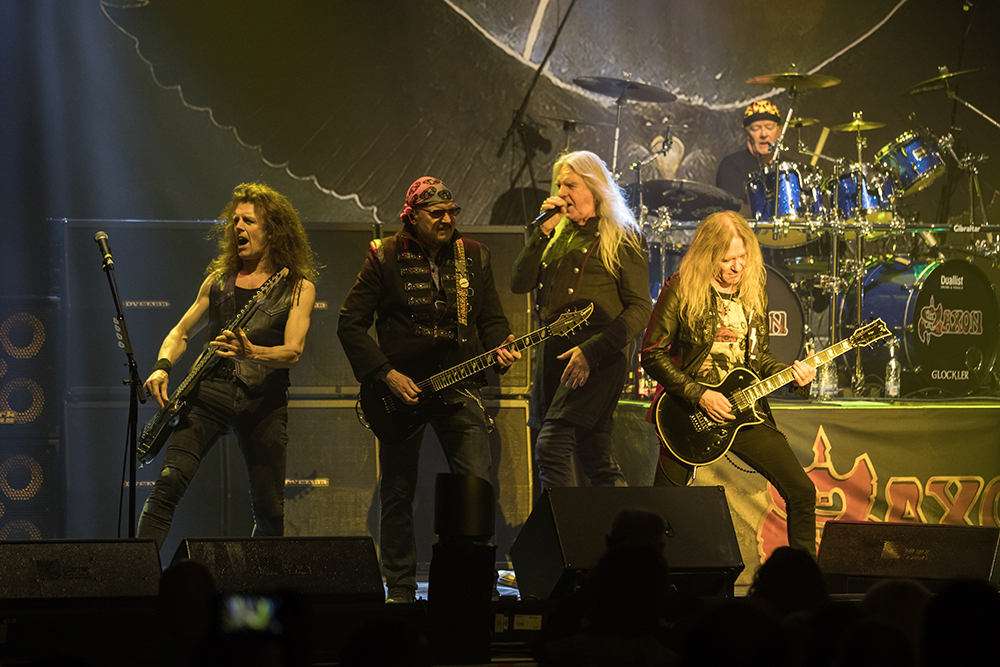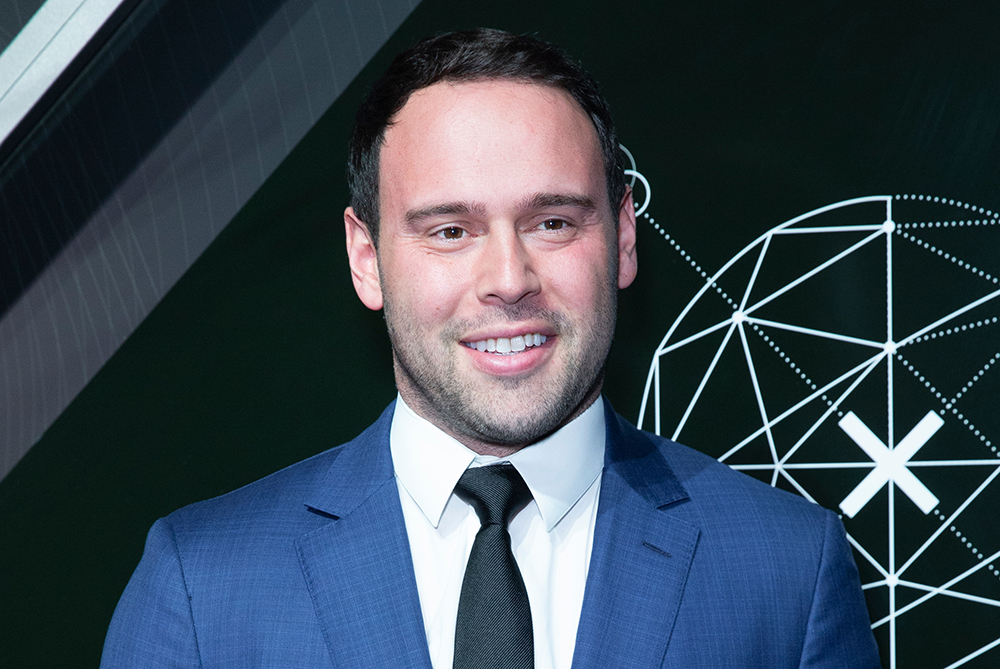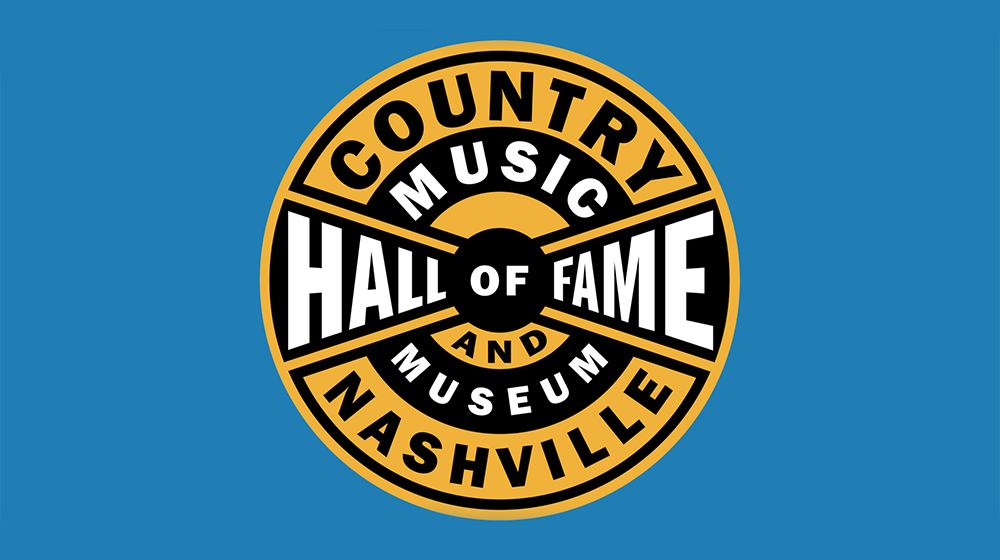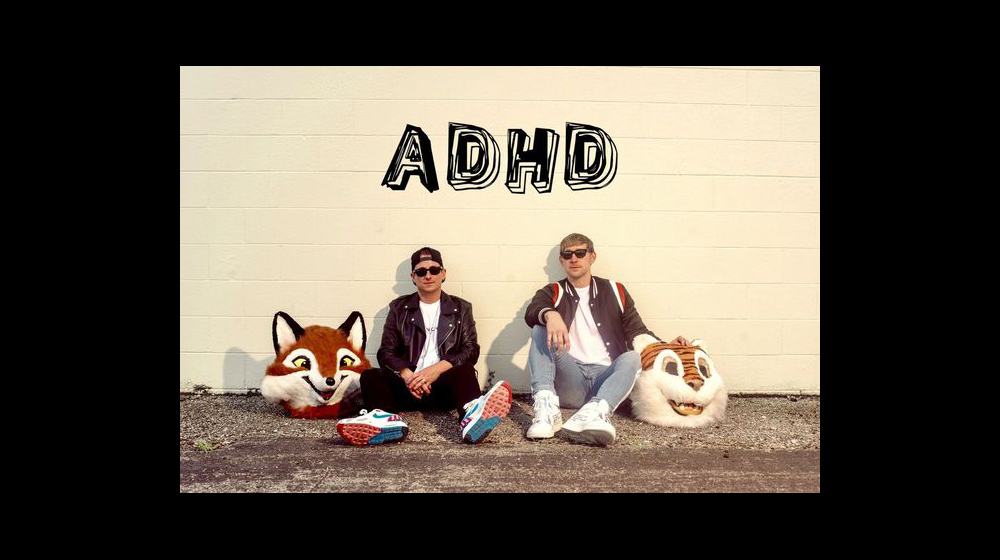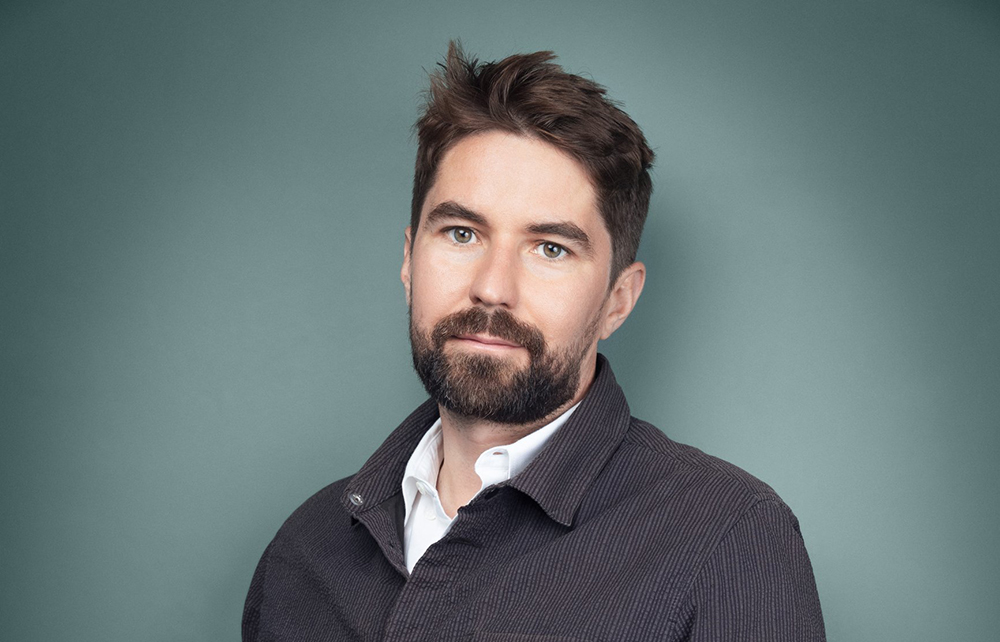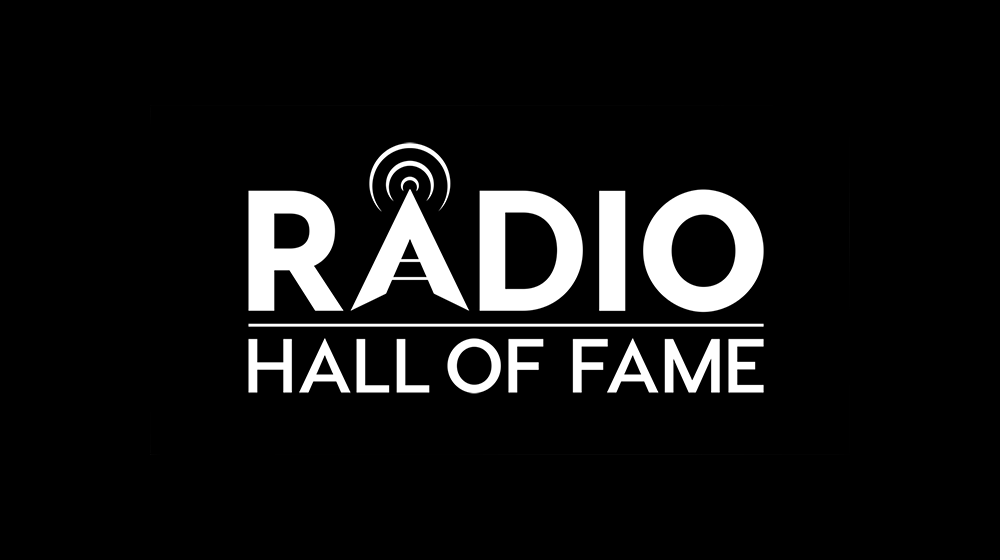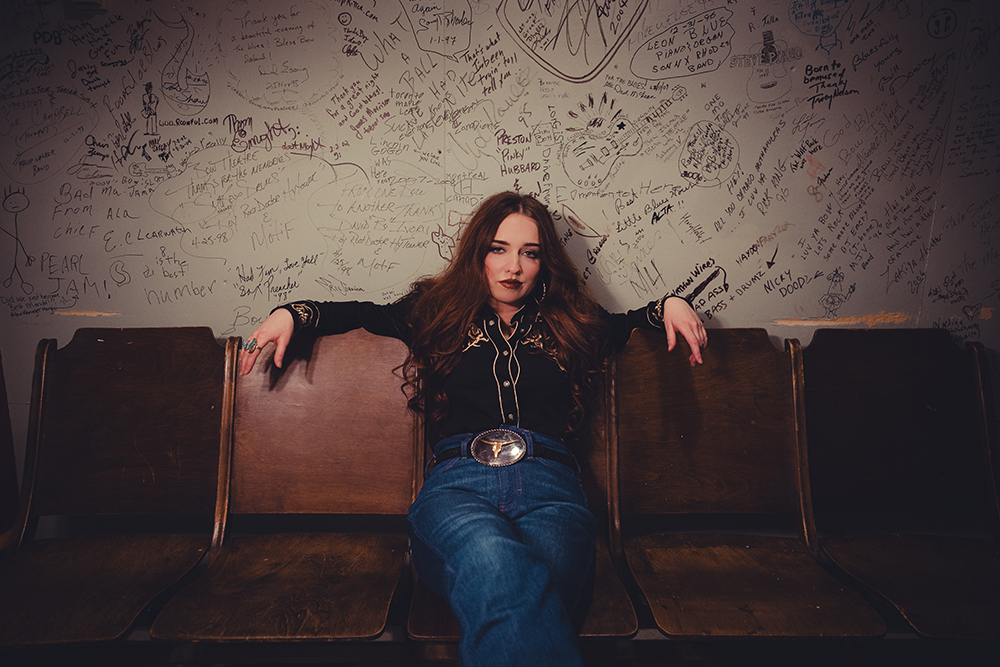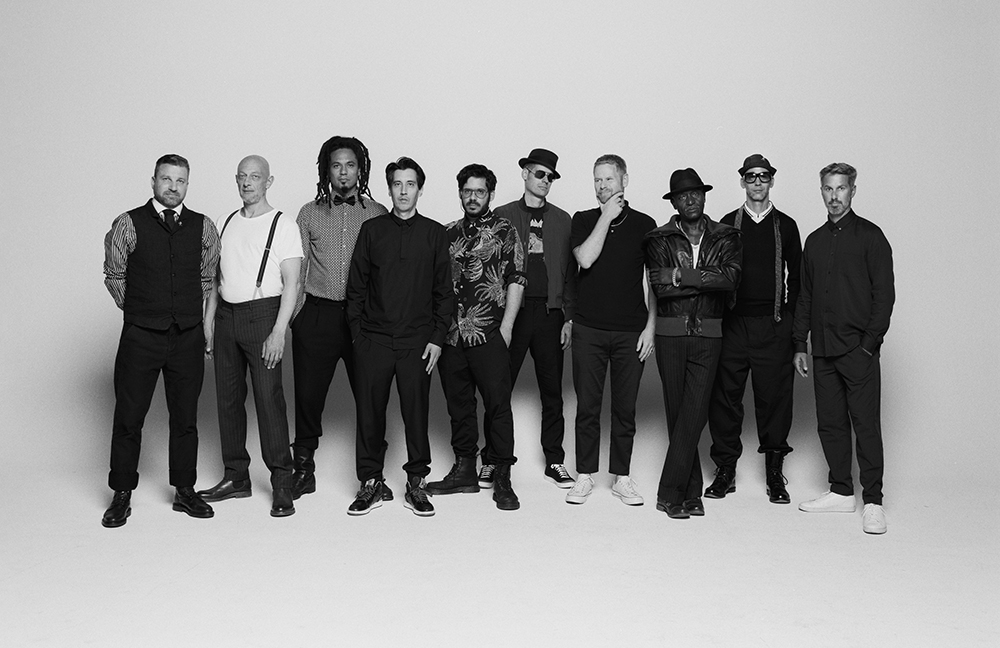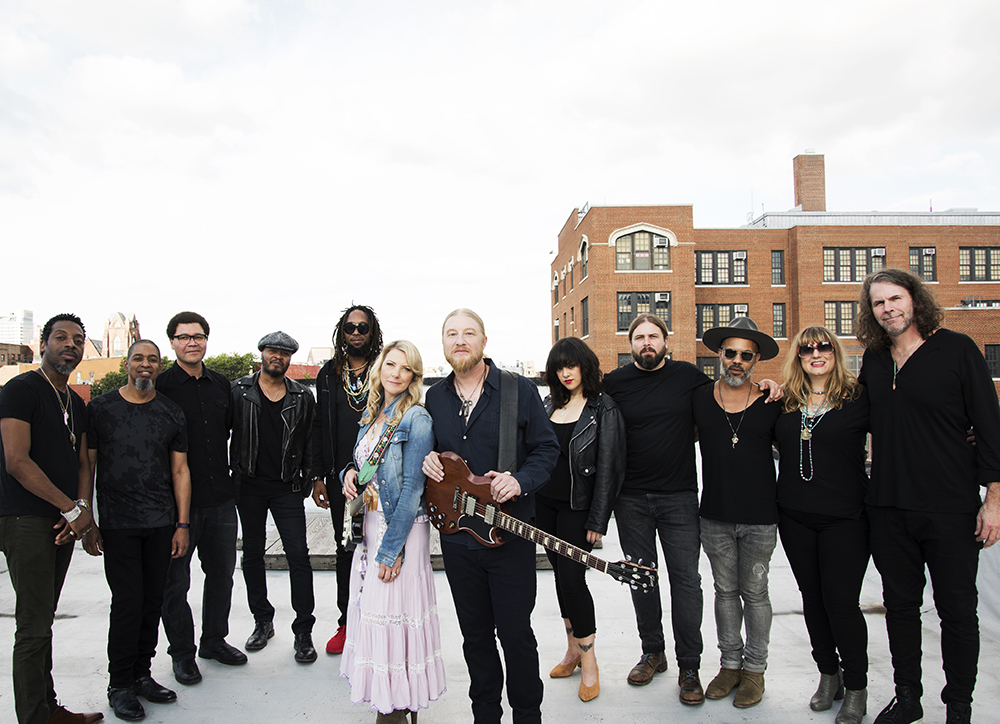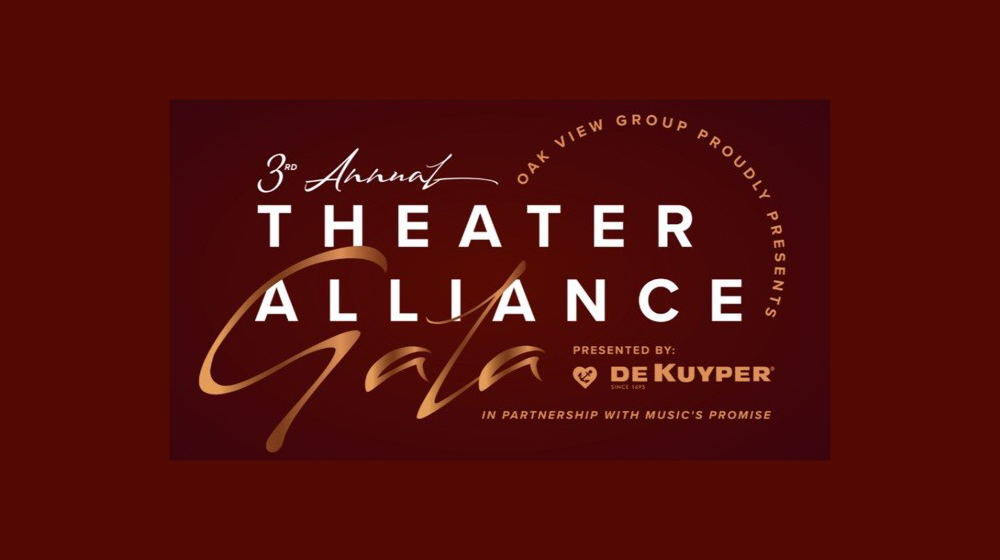This week In the Hot Seat with Larry LeBlanc: Brooke Wentz, founder of The Rights Workshop & Co-Founder, CEO of Seven Seas Music.
A recognized industry expert in copyright licensing, music supervision, and traditional international music, Brooke Wentz prizes authenticity over polish.
Wentz founded The Rights Workshop, a music supervision and creative clearance company in 2002; and with her partner, Maryam Battaglia, co-founded Seven Seas Music in 2014.
The Rights Workshop, which specializes in securing rights clearance and licensing for new and emerging media, has supervised over 200 films, and secured music content used in political campaigns, retail products, and brand campaigns.
Clients have included: Showtime, NBC, New York Times, Adobe, Verizon Wireless, LAX Sports Network, Jazzercise, Red Bull, North Face, SF Ballet, SF MOMA, Bread & Roses, Ralph Smyth Entertainment, Madison Square Garden, Disney, Florentine Films, Fork Films, HBO, Creative Chaos, Jack Morton Worldwide, JamPlay, Judson Laipply, Kartemquin Films, Mandalay Sports Media, Matchstick Productions, Teton Gravity, Marianne Williamson, Mechanica Agency, NVIDIA, Outside TV, Sherpa Cinema, SkiDive Dubai, and numerous filmmakers.
Seven Seas Music is a web-based streaming and licensing platform that supports professionals seeking quality international music for their media projects backed by its unparalleled library of curated international music.
Among the TV and film productions it has licensed music for are: “Parts Unknown,” “Criminal Minds,” “VICE,” “Legion,” “Snowfall,” “Homeland” “Seal Team,” “Kung Fu,” “Waffles & Mochi,” “9-1-1,” “Altered Carbon,” Ted Lasso,” and M. Night Shyamalan’s recent film “Old”
Wentz’ jam-packed resumé includes: Being one of the earliest music directors for ESPN; being a legal rights consultant to TechTV; being manager of A&R administration at Arista Records; being an NPR radio host; and serving as a music producer for New York City’s Times Square Millennium Celebration in 2000.
She is the author of two books on music licensing, “Hey, That’s My Music!: Music Supervision, Licensing, and Content Acquisition” (2007), and with Battaglia, “Music Rights Unveiled: A Filmmaker’s Guide to Music Rights and Licensing” (2017).
Wentz is currently writing and compiling a compendium of interviews conducted in the 1980s with new music composers and musicians, and producing a feature documentary about the American songwriter Janis Ian.
A native San Franciscan, Wentz graduated magna cum laude from Barnard College in New York and graduated with an MBA from Columbia University.
As a music supervisor, rights executive, business leader, and entrepreneur, what hat are you wearing today?
Today, I don’t know. I’m a music rights executive. I run Seven Seas Music, but I don’t like the term CEO. Just to be perfectly honest, I think that a company is run by a team of people, everybody has their own expertise. I’d rather have other people take the helm or be able to share.
You are partners with another expert in licensing, Maryam Battaglia.
That’s right, she’s my partner, and we have been working together for over 15 years. She’s also has a really deep knowledge in music rights. We are like “ying and yang” in the sense that we are different people with different styles of working, but we work together very well.
You founded The Rights Workshop, the music supervision, licensing, and creative clearance company, in 2002. It is a service where people come to you asking for a specific artist’s music, and you then go to the copyright holders and negotiate the use on behalf of who is calling.
The Rights Workshop, we do mostly licensing. Documentary filmmakers, they come to us with music that they want to use in a show, and we clear it for them for their production It’s more admin supervision.
With Seven Seas, you have negotiated with rights holders to exploit their music. People then may come to you saying they need music from a region, and you search your catalog and see what fits best to what the producer is asking for.
Yes, with Seven Seas Music, that’s where we place music in a lot of TV shows.
How many people work in both?
The Rights Workshop has three, and Seven Seas has seven.
Everybody works in San Francisco?
Maryam now lives in New Jersey. She’s on the East Coast, and I am on the West Coast. Seven Seas is really spread out with three people in San Francisco , one in L.A., one now in Chicago, and one in Paris, believe it or not, and Maryam on the East Coast
How involved are you today in the placement of music for TV and film?
I don’t get that involved. My creative people are the ones that have the relationships with the music supervisors. They are the ones that get music in their shows. For our first client “Anthony Bourdain: Parts Unknown,” that was through me. A colleague of mine, David Kinch, knew me from when I had a radio show in New York City. He’s a Michelin star chef (who owns and operates Manresa, a restaurant in Los Gatos, California), and he knew Tony, and put me in touch because he knew that we had great music. Then we did the deal with the production company, ZeroPointZero
You couldn’t deliver Anthony Bourdain to a Uruguay artist whose music was placed in CNN’s “Parts Unknown.” The artist was so excited about having his music heard in the show that he didn’t want to be paid, but he asked if he could meet Anthony when he visited Uruguay. You forwarded his request to ZeroPointZero, but the production crew didn’t have time to meet the artist. A year later, the artist demanded four times the regular fee for the use of his music.
Oh my God, how did you hear about that? That was crazy. The guy was so upset that he couldn’t meet Bourdain. It was just so funny what later happened.
What were the challenges in setting up Seven Seas Music which received a $60,000 grant in 2014 from The Pipeline Fellowship, an angel-investing boot camp for female owned businesses?
Surely, a challenge is ever-evolving technology. It costs a bundle to create and maintain a search engine platform.
Yes, there’s a lot involved. Getting a technology person is probably the most difficult. Everybody says that they can do things, and then you find that they really can’t see your vision. We have gone through a variety of technical people to be able to put our search engine together. And that is a whole other conversation that I’d rather not discuss. It’s a sore point. Yeah, we brought in our first creative director Andre Comeau who did well, found us a lot of placements, and he’s been with us for the past four years.
So there are a lot of intricate pieces involved?
Which is why we are fund-raising at this time. We are looking for an investment partner, and it has been hard as a woman to do that. My colleagues, and my competitors, have male businesses, and they seem to get money rather quickly. I do feel, like maybe, this year is our year. I don’t know. It’s not an easy thing to put together a team. Let’s me put it that way.
Has it helped being close to Silicon Valley? By becoming increasingly more specialized in digital and new media rights, The Rights Workshop has worked with Microsoft, and with Oracle and has programmed and supervised music for such games as Audition Online, and JamPlay.
Being near Silicon Valley sounds attractive, and you would think that there would be a lot (of connection) there, but honestly, they are not looking at content companies like ours. They are looking at technology companies. They don’t really see us as a technology play.
Nor are Silicon Valley executives known to be friendly toward women.
No, and they are not particularily friendly toward the music business either. They don’t like music tech. That is a certain type of an investor. This past year has been good for music content due to a lot of the sales, but we don’t own content. We would like to own content because we need money in order to go shopping, and tell people (via marketing). It’s really been a matter of finding people who understand our vision, and what we can bring to the table, and who believe in our growth. We are also a B2B (business-to-business) not a B2C (business direct to consumers). We don’t do streaming and subscription. We could get there, but we are not there. We would need more funds to be able to do that. Just because we are near Silicon Valley doesn’t mean that it is easy. I have pitched many times to Silicon Valley. Honestly, I win a lot of the pitches, but it doesn’t seem to bring in the funds that we need into play.
The problem is you are a renter not an owner in business terms.
Correct, yes. But we are moving into ownership. That’s what we are doing. We have the clients now, and if we move into ownership, that will be even better.
How difficult is it with all of the countries you work with to deal with communication and with contracts when English is not their primary language? Do you have a boiler plate contract that can be adapted to different languages?
Yes. It’s called a contributor agreement, and we made it really easy, and very streamlined. It is only two pages for artists, and we’ve had it translated into four or five languages. Some people say they don’t want to do it (sign), and that’s fine but it’s really hard (to work then). We have someone who works for us who tries to sign up artists, but it’s not that easy because artists are very fickle. They don’t really understand things. They get nervous when it comes to an agreement.
Mostly artists don’t want to give up rights.
Correct.
Even in the mainstream Western commercial music world if you ask for a portion of music publishing, the artist/songwriter is apt to go, “Hold on.”
I know that.
From a film and TV producer’s standpoint, they do need to control the music publishing, and some aspects of master rights, in order to sell their production.
Yes, that’s very true.
You have written books on the subject.
Yes I have. There are some artists who really want us involved with their publishing, and there are others who just don’t. Everyone is different.
You wrote two outstanding books for musicians and music supervisors, “Hey, That’s My Music! Music Supervision, Licensing and Content Acquisition” (2007), and with Maryam, “Music Rights Unveiled: A Filmmaker’s Guide to Music Rights and Licensing” (2017).
The late ‘70s and early ‘80s saw the emergence of the “home studio geek” working with advanced technology, in effect, being able to replace traditional and expensive studios, backing musicians, even orchestras. A producer or a composer could create everything needed for their TV and film music work in their home studio or, at least, in a smaller, less expensive studio.
Licensing music has never been easy. The system is designed to work for the rights holders which makes the use of their music somewhat complicated. Even tracking down who owns both the master and the publishing of a track can be challenging.
At the same time, low-budget, productions have often used all their money in the filming, and have no money left for music. It’s usually, “What can you do for us to help us out?” Also, musicians often don’t own the copyright or publishing of the music used. They retain the songwriter’s share. These are works-for-hire subject to copyright that are being created by them as an employee, as part of a job.
So many musicians and songwriters fail to understand that while they are musicians and songwriters, they are also small business people.
Well, I realize that, and it’s amazing There are a lot of managers that don’t understand that either. It is a really interesting. Some get it, and some don’t; and they get petrified, and some don’t. I could go on and on. That would be a whole other conversation. About artists understanding about publishing, and record labels. I try to tell all of the young people who want to become music supervisors, and work with us, and I even tell clients, that Sony Music Publishing is totally different than Sony Music (with Columbia Records, RCA Records, Epic Records · Arista Records, Arista Nashville, RCA Records Nashville, Columbia Nashville, and Legacy Recordings). They don’t understand what the other one is doing, and they honestly don’t care because they are entirely different businesses.
The companies themselves don’t care about the difference either.
No, they don’t.
People today are only awakening to the opportunities involved with traditional, world, folk, and contemporary ethnic music. Or we can call it international music.
I like that.
A couple of decades ago, you had to go to the World Beat section of a leading music retail store to find any international music. The internet has somewhat closed the gap. However, you can only access a tiny portion of this music through one of the streaming platforms. The door is open, but not all that much.
It is. But it is also harder to find that music. You go to Bandcamp, and you put in the word “Afghanistan,” and you are only going to find bands with the name “Afghanistan” or a song with the word “Afghanistan.” You are not going to be able to hear Afghanistan music. Spotify does the same. You cannot search a genre or a country or a type of music. So it’s harder. When you’d go to a record store, and you went to the World or International music section, it did say Latin Music or music from Colombia or Peru. Latin music is made up of a lot of different countries. So it can be from Colombia or Haiti, just a whole different thing.
Most Colombians speak Spanish, also called Castilian. Haitian Creole, a blend of French, Taino, and some West African languages, is the most popular language in Haiti. More than 95% of Haitians are fluent in the language. Spanish is a minority language in Haiti.
Over the years, the contemporary pop sector has embraced international music. Among those artists who have been attracted to global sounds or who became champions of those sounds are:Paul Simon, Paul McCartney, David Byrne, Mickey Hart, Vampire Weekend, Dirty Projectors, Abigail Washburn, Beirut, Devotchka, David Wax Museum, Beats Antique Calexico, and Man Man have all incorporated music that falls under the international or world music umbrellas into their own sounds.
Besides Paul Simon expanding his music with “Graceland,” with his stream-of-consciousness poetry layered over black South Africa’s doo-wop-influenced township jive and Zulu choral music, and his pilgrimage to Brazil to record “Rhythm of the Saints” (1990), a fusion of African-derived percussion with American folk rock, there was also Brit/South African Johnny Clegg, and Sipho Mchunu, a Zulu migrant worker and street musician, assembling Juluka, and recording albums that were a fusion of Zulu music, and various European traditions.
My Canadian friend Danny Michel has also been pushing musical boundaries. A decade ago he relocated to Belize to record the album “Black Birds Are Dancing Over Me” with the Garifuna Collective, an Afro-Amerindian cultural group. More recently, Danny and percussionist Champagne James Robertson went to Budapest, Hungary, and recorded at Szimplaza Studios as The New Budapest Project with overdubbing in Transylvania, Romania, and Toronto.
In many cases, traditional, world, folk, contemporary ethnic music, or international music available is the pop music of various foreign regions. from where it’s coming from.
Yes, that’s very true. It is very popular in their homeland.
I don’t hear it as weird music.
But some people do. I think it’s the New Music, but that just depends on the person.
Would you be considered an ethnomusicologist?
I don’t see myself as an ethnomusicologist. I have a lot of contacts. If I need something from a certain place I have people that I can go to. I can listen to it, and with a background in radio, and knowing how to keep a listener or knowing how to educate a lay listener about weird sounds, I probably have a good ear, and I am able to get a lay listener to like weird sounds. It is really a matter of presenting people with the right material. It’s just like anything else. You can’t take someone and have them look at modern art, and expect them to understand it. You’ve got to give them a bit of history. Or you can’t get them to taste some weird food without them understanding where the food is coming from, or how it’s put together. So I think that is the thing for music. You have to get them to understand.
But what is beautiful about today is that so many more artists are using some of these sounds as background or samples in their work and that people are starting to become more familiar with that music.
Many leading Western musicians are curious about international music and would likely be receptive to working with non-Western musicians.
Yes, that’s right.
I remember the Andean folk music group Los Incas, also known as Urubamba, accompanying Simon & Garfunkel on “El Cóndor Pasa,” an orchestral musical piece from the zarzuela “El Cóndor Pasa” by the Peruvian composer Daniel Alomía Robles. Los Incas’ instrumental version was used as the base track of Simon & Garfunkel version on the 1970 album “Bridge Over Troubled Water.” Released as a single in the US, the track reached #18 on Billboard’s Pop Singles chart, and #6 on Billboard’s Easy Listening chart 1970.
A Paul Simon interview in the ‘60s tipped me off to the Nonesuch album “The Music of Bulgaria” a live recording of conductor, composer, arranger and founder Filip Kutev (aka Philip Koutev), and the Ensemble of the Bulgarian Republic made in Paris in 1955 that introduced Bulgarian choral music to Western audiences, and an influenced Paul Simon, Frank Zappa, and Graham Nash.
This led to the Bulgarian State Television Female Vocal Choir contributing to Marcel Cellier’s “Le Mystère des Voix Bulgares” recordings.
Yes, the Bulgarian Music Choir.
In 2020, helping to introduce Only Love Records, a music label launched by the Jerry Garcia Foundation in collaboration with Seven Seas Music, was the compilation album “Annapurna’s Song: Music of the Himalayas,” which you produced. It features a selection of music by a variety of artists from the Himalayan region, including Tibet, Nepal, Bhutan, and India.
Featured on the album is “Clouds,” a Jerry Garcia instrumental duet with Indian guitarist Sanjay Mishra. The track was recorded at the Grateful Dead’s Club Front studio in San Rafael, California, and originally released on Sanja’s 1995 LP “Blue Incantation.”
(In an interview Sanjay Mishra recalled that Jerry Garcia had been a fan of his 1993 debut album, “The Crossing.” “(Garcia) had a long interest in playing music that had an international, specifically Eastern bent, but was not that, meaning not traditional Indian music,” Mishra explained. “It had to have the ‘right’ space and mix of the two cultures for him. My music is a natural mix of my consciousness-Indian and western classical, jazz and The Grateful Dead. ‘Clouds’ was about that, and emotional honesty, which can be heard in the recording.”)
“Annapurna’s Song” is with the Jerry Garcia Music Arts which is a non-profit. I’ve been doing a lot of work with Jerry Garcia Music Arts. They really like what we are doing. So we decided to put that compilation together, and Manasha Garcia (serving as producer at Jerry Garcia Music Arts, curating and producing select recordings from the Official Jerry Garcia Music Archive), who is one of Jerry’s widows, had recommend the track, and I was very happy to do that.
Surely, one of the reasons you followed a path toward global sounds was that only a handful of labels in the West were interested in having any sort of global footprint previously.
Among them were: EMI, Mercury, Ryko, Island, Mango, Rounder, Nonesuch, Bridge, Shanachie, Ellipsis, Putumayo World Music, Naxos Music Library/World, and ARC Music Productions International, established in 1976 by Horst Tubbesing.
(Putumayo began in 1975 as a Latin American handicraft shop in New York City, by its then 23-year old founder Dan Storper. The company grew to 7 shops and a wholesale business. In 1991, on his return from Indonesia Storper had stopped in San Francisco, and happened upon the African band Kotoja. That chance occurrence led him to start the Putumayo World Music record label with his friend Michael Kraus in 1993. Putumayo World Music quickly became renowned for its distinctive compilations of international music which feature the distinctive covers by British artist Nicola Heindl.)
Putumayo has had a number of terrific years. In sourcing traditional international music, how authentic does it need to be in order to be licensed for film and TV projects? Surely, music supervisors want the real thing, not something watered down. They want the real deal.
Well, that is what we offer. If you go to our competitors which are music libraries, mostly they don’t have much international music, and they certainly don’t have authentic music because music libraries are made by people who are generally in the West who are making that sound a particular way. So we decided to monetize the artist’s music from these other countries because we feel it is much more authentic, and obviously it helps and benefits the artist more than having a white guy in Santa Monica trying to create Nigerian drum beats. You might as well pay a Nigerian musician the same amount of money so he can live a lot longer or he can use that money a lot wiser. This why we decided to find this content.
For decades, David Lewiston, a London-born classically trained pianist, who liked to call himself a “musical tourist,” roamed the four corners of the earth with tape recorder in hand, seeking out Tantric Buddhist chants in Tibet or festival music in Oaxaca, Mexico or the panpipe music of Peru, or the kecak monkey chants of Bali for the Nonesuch, Bridge, Shanachie, and Ellipsis labels.
Apparently, his search for undiluted indigenous music became more difficult with time, and the incursion of electronic instruments. “Oh yes, a Tibetan nun and a synthesizer,” he lamented to RootsWorld Radio. “When I go to the Himalayas, which is an annual jaunt for me, I have to be very careful to remind the musicians, ‘Please, no film music from Bombay.’”
I was the first producer for Ellipsis Arts when they did their compilations that came out at the same time as Putumayo when they started. Our compilations on Ellipsis Arts were: “Global Meditation – Authentic Music from Meditative Traditions of the World”; and “Global Celebration – Authentic Music From Celebrations Around The World” (1998). And I did a box set called “Voices Of Forgotten Worlds” (1993) which was done for the International Year for the World’s indigenous peoples.
(On December 23 1994, the United Nations General Assembly decided, in its resolution 49/214, that the International Day of the World’s Indigenous People would be observed on August 9th each year. The date marks the day of the first meeting, in 1982, of the UN Working Group on Indigenous Populations. On this day, people from around the world are encouraged to spread the UN’s message on the protection and promotion of the rights of indigenous peoples.)
And I did the 3-CD set, “Africa Never Stands Still” (1994), I did two compilations for Rounder called “Global Divas” (1995)
Yes, you oversaw the delightful three-CD “Global Divas: Voices From Women Of The World,” released by Rounder Records in 1997. It featured Patsy Cline, Aretha Franklin, Lydia Mendoza, and Celia Cruz. The album was produced to promote the United Nations Fourth World Conference on Women.
And I have the wonderful “Africa Never Stands Still” (1994).
Those compilations were better received by the critics than the Putumayo (compilations) were even though Putumayo recordings sold very well because of their outreach through their retail chain. Ellipsis Arts didn’t last as long as a company. I think that it folded after about 10 years.
You just did a deal with Putumayo.
Yes, Seven Seas is now going to be representing Putumayo’s compilations for licensing. If they have any third-party licensing.
Let’s talk about Seven Seas Music recent activities in Nagaland, a mountainous state in northeastern India, bordering Myanmar. The Chief Minister Neiphiu Rio recently announced on Twitter a partnership between the Task Force for Music & Arts (TaFMA), under the Government of Nagaland, and Seven Seas Music with the hope that this partnership will create new vistas, especially for Nagaland’s folk and fusion musicians.
Giving the local musicians, “a much-needed platform to let the world hear and discover music from Nagaland.”
Most helpful to you is that Nagaland—with a population of almost 1.9 million people, and home to 16 major tribes–has a high literacy rate, and the majority of the population speaks English, which is the official language of the state.
How did this unique agreement come about?.
I was put in touch through one of our advisors—there are 7 advisors–to a woman from Nagaland, and their cultural attaché is very keen on exporting their music. So she put me in touch. I knew about Nagaland because of the recording engineer Bruce Swedian who worked with Quincy Jones for a long time. I worked with him when he produced an African recording with Les Go de Koteba in 1999.
(Bruce Swedien, a Grammy Award-winning recording engineer, who died on Nov. 16, 2020, was best known for his work with Michael Jackson, and the producer Quincy Jones on the “Thriller” and “Off the Wall” albums. He also recorded Duke Ellington, Count Basie, Barbra Streisand, Dinah Washington, Jackie Wilson, Sarah Vaughan, and Jennifer Lopez.
I also discovered Bruce’s wife (Bea Anderson Swedien) had lived in Nagaland for 10 years as a child because her father (Bengt Anderson) was a missionary there. She always used to talk about Nagaland. She gave me some fabric from there, and she wrote a book about her experiences living there.
(Bea Anderson Swedien wrote “Under the Red Blanket: The Story of My Family’s Life in Northeast India” (2011) which includes stories of life under the British Raj, World War II, and the Japanese invasion into India. The book also describes the horrors witnessed during the separation of India and Pakistan in 1947).
So I had all of this background knowledge of Nagaland but I had never been in touch with the music. So when I got in touch with the cultural attaché and his staff, they were like, “Wow, you know about Nagaland?” I was like, “Yeah, I don’t know it but I know of it.” That’s how it started. They wanted to make more forays into the West so we offered to work with their artists. That is how we got involved.
Nagaland is known as “the land of festivals” due to there being about 20 festivals annually.
My God, that many? I didn’t know that.
I do know of the annual Hornbill Festival held at the Naga Heritage Village of Kisama about 12 kilometers from Kohima. All the tribes of Nagaland take part in this festival which provides tourists a glimpse of the culture and tradition of local tribal peoples.
Is it not unusual to make a business agreement with a non-western country?
I have some experience in that. I used to work at the French Music Office here in New York City for just under a year in the ‘90s when they set up their office here in New York. The main purpose of the office (since closed) which was funded by the French government, actually under France’s then Minister of Culture Jack Lang, was to help French artists be promoted in the United States. That was when Patricia Kaas was big.
With her album, “Scène de vie” which was a bestseller in France, Switzerland and Canada.
So when they needed help touring her or getting more promotion or reaching out to writers in the States, that’s what the French Music Office did. It was helped all genres of music from France get more attention here in the United States.
Many other countries, including the U.K., Canada, South Korea, Brazil Chile, Germany, Austria, Sweden, Italy, Iceland, the Netherlands, and Australia have export offices or organizations ensuring their artists get in front of global audiences.
A lot of countries outside of the United States have professional arms that are very interested in the exploitation of the culture which means essentially exporting their music. I was recently sponsored by Music Estonia to go to Estonia for Tallinn Music Week (from September 29 to 3 October 3rd showcasing 155 artists from 19 countries, 100 of them from Estonia) so I could hear Estonian music and other music from that region so hopefully we can bring exposure to Estonian artists.
Still, Nagaland is a bit off the grid.
Yes, of course it is. We also don’t have too many countries in Africa that have full access, although I was invited to Morocco for the festival, Music To Music, but it’s not like Nigeria or Ghana or any of those places in West Africa or even East Africa.
You were born and raised in San Francisco?
Yes, but I lived for a long time in New York.
Early on, your parents took you to music events, including to see Janis Joplin perform.
Ages and ages ago, yes. My dad did, yes. He was brilliant in music, and literature.
You left San Francisco to attend college in New York City. You received a B.A. magna cum laude in art history from Barnard College, and then an MBA in finance media from Columbia Business College.
What were you intending on doing with your life? Surely not this.
(Laughing) I really did not know. I did not anticipate that this is where my career would go. I was an art history major. I thought maybe that I would go, and get a master’s in art history. I don’t know what I was even thinking, what I would do with it? Then I realized I liked music more. So I decided to stay in music.
You began your music career in the 1980s as a public radio host for such stations as New York’s WKCR-FM, hosting the music program “Transfigured Night.” Eventually, you became New Music director of WKCR-FM.
I did everything I possibly could living in New York City being in the music business. I worked at a record label.
You were manager, business affairs, A&R Administration at Arista Records for 2 ½ years (1988-1991), preparing budgets, overseeing production costs from pre-production to mastering, and overseeing artists’ royalty snafus.
Yes, I worked at Arista doing business affairs. I wish, maybe, I had a little more direction, but I did what I did.
How was it working for a commercial mainstream label?
It was different because I still really liked my weird music. There were only two people in A&R there who would talk to me about stuff. I would tell them about this particular (international) artist, but they were more interested in me dealing with Milli Vanilli, Darryl Hall and John Oates, and Aretha Franklin. I was like, “That’s great music but why don’t you look at someone a little more interesting?” But there was nothing that I could do at Arista about it. I just thought, “I want to do something more. I want to do something more with artists. And do something with the environment.”
What brought you back to San Francisco, and what has kept you there?
Nothing has kept me. I’ll tell you why. I did my career in New York, and then I went up to ESPN in (Bristol) Connecticut. Once I had a daughter I didn’t want to raise her necessarily in Connecticut. My ex-husband is a musician, and we thought either L.A. or someplace in California would be good. We went to L.A., and then he, being a native New Yorker. felt like a fish out of water, and he moved back to New York, and I wanted to raise my daughter in a more liberal environment up in San Francisco; mainly so she could go to school in San Francisco. I moved back in 2001.
Just prior to moving back to Frisco, you were the music director for New York City’s Times Square Millennium Celebration in 2000.
They were doing a big event, and they were going to celebrate the time zones from that era. I think there were 24 time zones. So I was hired to do the music for each of the time zones. It was 20 minutes at the top of the hour, 10 minutes before and 10 minutes at the top of the hour of music from that time zone celebrating. So I had to find a lot of music. It was a great experience and I used that as a way to move away from ESPN and go back to California. I worked with people that were on “The Lion King” really well-known co-administers, choreographers, and directors.
You’ve done some very cool projects over the years. How have people heard about you?
(Laughing) I don’t know. The guy who got me for BID which stands for Business Improvement Development which are the people who run Times Square for the city. The gentleman who recommended me knew me from New York City. Even the clients for the Rights Workshop are through word of mouth.
Was there an educational process with international that led you to sourcing music for licensing music for film and TV?
I’m not sure I was using it as an educational process. I’m a rapacious listener, and I did that radio show in New York City for 8 years which was promoting new music. That was really avant-garde music, everybody from John Cage to John Zorn to William Parker.
Then when I had a filmmaker as a guest on my radio show, and he started playing a lot of African music. I thought, Oh my God.” I thought of traveling, and hearing some of this music first-hand. Then I traveled in Eastern North Africa by myself.
In 1991, you returned to attend the FESPACO film festival in Burkina Faso, (formerly the Republic of Upper Volta). You were an eyewitness to the bloodless coup d’etat in which President Ibrahim Boubacar Keita was detained, and forced to resign.
(Keita’s forced resignation came after months of a political crisis that stemmed from a disputed parliamentary election. According to Thomas Schiller, of the Konrad Adenauer Foundation in the Malian capital, Bamako, “There were massive demonstrations against the president in the preceding weeks, supported by a protest movement called M5-RFP: This protest movement contributed to the fact that there was already a sociopolitical crisis in Bamako.”)
I went there with a close friend Cathy Bitton who lived in France and worked for Universal. She had a film about (Cameroonian musician and songwriter) Manu Dibango at the FESPACO film festival. We met there, and from there we decided that we would travel up to Mali. I knew some Americans from living in New York. A woman who was over there was visiting a boyfriend north of Timbuktu. We’d stay in a town called Araouane which is 7 hours north of Timbuktu. Her boyfriend lived there because he did the Paris-Dakar Rally car race, and he got to know the villagers, and he was there to help them irrigate and bring in water to that very dry part of the Sahara Desert So we were going to visit them in Araouane, but we had no transportation to take us there.
Long story short, Cathy and I never made it to Areouane and, instead, took a 4-day ride in the desert on camels which was phenomenal.
Then we flew down to Bamako to stay there for a few days. I had an appointment at the radio station to get some music, and to tape some music. I was so excited. We spent one night in Bamako, and the next day, which was a Friday, there was a lot of activity on the streets when we were heading over to the radio station. The activity was that the students were starting to riot. By the time, we got to the radio station they wouldn’t let us in. They made us go to the hotel across the street, the Hôtel l’Amitié Bamako. Essentially, that is when the coup started. We couldn’t get back to our place. We were told to stay in the lobby, and hang out,
Who walks into the hotel but (Malian musician) Salif Keita. Of course, he’s very obvious looking, and I just said, “Hey, you’re Salif Keita,” and he was like, “Yeah.” He was stuck in the hotel too with his crew. We ended up having lunch with them and hanging out until the end of the day. Then his driver took us back to our place.
The rest of the coup happened during the week. Because Cathy is French the French government flew her out of Mali, but the American government, of course knew nothing of what was going on. They couldn’t have cared less about me. I remember calling my parents, and they were like, “Where are you?” There was no news about the coup because Americans couldn’t have cared less about Mali in 1991. But I was stuck there, and Salif and I hung out for a few more days, and then I finally got a plane to the Ivory Coast, and went on my merry way.
When I came back from the trip, I realized that with this music that there were so many new rhythms from what I was listening to in New York City. I started exploring that and then I had an opportunity to put together “Global Meditation” through a friend of mine, and I realized that for my radio show that I had already been collecting a lot of (Nonesuch) Explorer series from Warner Bros. So I knew about gamelan (the traditional percussion orchestra of Indonesia), and I knew about David Lewiston’s field recordings of kecak monkey chants. I am just a voracious listener.
At a time when American FM radio was venturing into experimental territory, and the counterculture began tuning in to non-Western cultures,
So when I was asked in 1993 to put together this compilation of spiritual meditative music, “Global Meditation – Authentic Music from Meditative Traditions of the World.” I was like, “Okay let’s do that, and honestly, some of my colleagues were like, “Oh good, you are getting into that New Age stuff” and I was like, “I’m not going to make this New Agey but I certainly have a lot of contacts that I can reach out to get some of this music. We kicked back, and we did very well. The four-CD set ultimately won a Billboard magazine award in 1994 (for the best international album of the decade) which, as you know, is based on sales. So it did very well.
In 2012, I attended the annual Oppikoppi festival in the Limpopo Province of South Africa, near the mining town of Northam. That year’s festival—which ran Aug. 9-11—attracted 20,000 fans, to see over 130 acts. To hear kwaito, traditional, and world music live–in its natural setting—was so very different than hearing it on record.
Yeah, to see something live is very different.
I can’t imagine hearing some of this music live in a club. I’d go out of my mind. And obviously, you have heard different musics in a club
Yes, I have. Some stuff is a little jarring. I took my daughter once to see this (Garifuna music band) from StoneFree Records, these guys out of Belize, and they were playing turtle shells. She wanted to go and see her friend, and I was like, “No you are staying here and watching this.” I will always remember that she enjoyed it, and she could see her friend in time.
After COVID, I wonder what world we will return to?
Oh I don’t know. We aren’t in the live concert business, but we are doing a show with two of our artists from Afghanistan in San Francisco on November 5th at the Golden Gate Park Music Bandshell. With Kabul Dreams who are in the Bay area, and Mozhdah Qais Essau from Toronto. We are doing it with Value Culture which is a non-profit in the Bay Area. I am excited about that.
Larry LeBlanc is widely recognized as one of the leading music industry journalists in the world. Before joining CelebrityAccess in 2008 as senior editor, he was the Canadian bureau chief of Billboard from 1991-2007 and Canadian editor of Record World from 1970-80. He was also a co-founder of the late Canadian music trade, The Record.
He has been quoted on music industry issues in hundreds of publications including Time, Forbes, and the London Times. He is a co-author of the book “Music From Far And Wide,” and a Lifetime Member of the Songwriters Hall of Fame.
He is the recipient of the 2013 Walt Grealis Special Achievement Award, recognizing individuals who have made an impact on the Canadian music industry.

